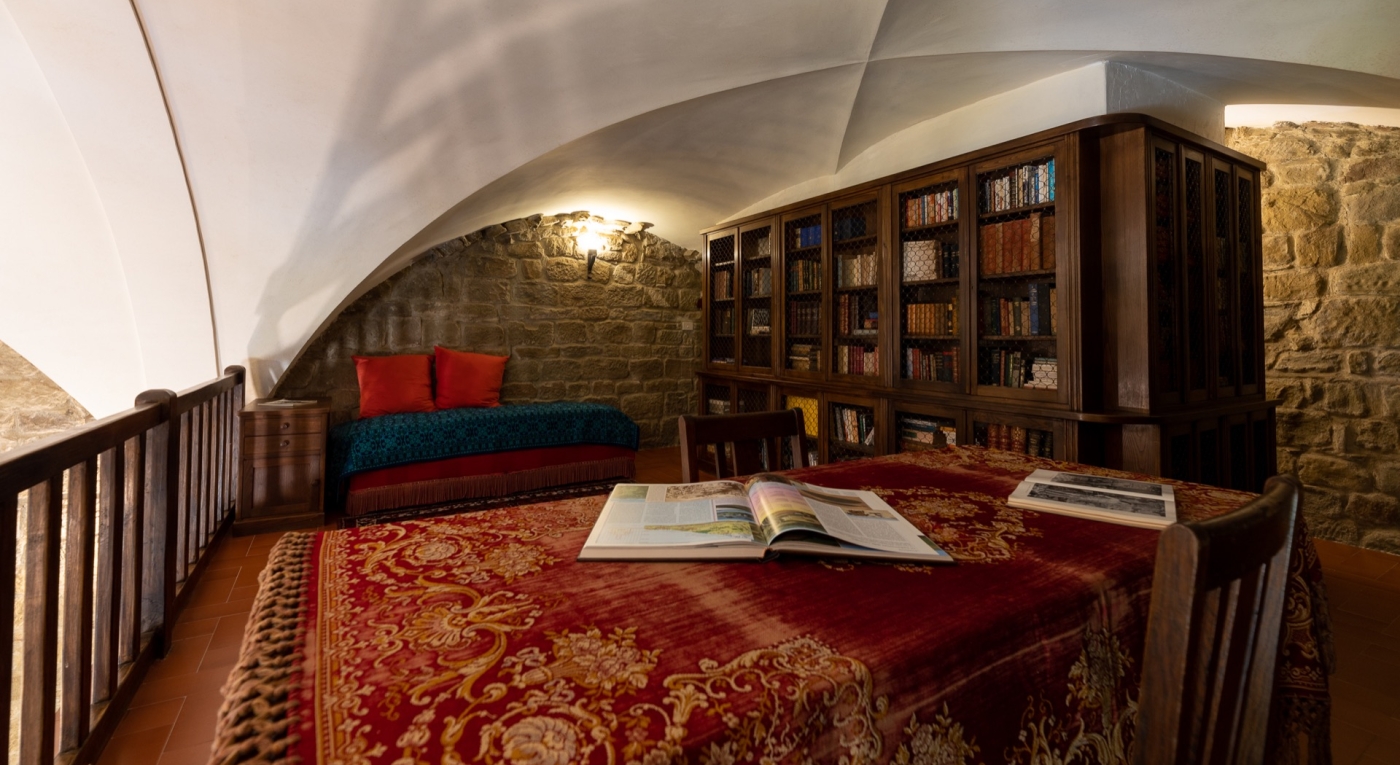
A castle to visit
A unique place among the medieval castles in Italy
The Castle of Porciano is a symbol of the Casentino Valley to visit and fall in love with, one of the richest and oldest medieval castles in Italy, whose halls and treasures
speak directly to your heart.
The village of Porciano forms an elegant necklace around the castle, here a 35-meter tower stands proudly perched above the town of Stia, A privileged point of view to discover the colors and scents of a wonderful land.
The Castle and the 7 surrounding cottages are the perfect place for your adventure.
The Tower
In the halls of the castle the nuances of medieval traditions have never faded, the stones laid by the Counts Guidi in the twelfth century continue to provide a rare example of combined military and residential architecture.
The Museum
Today the Castle of Porciano houses an interesting museum on the first and second floors, where a collection of antique objects for agricultural and domestic use is kept. The collection provides a link to the world of local sharecropping and shepherding, both fundamental components of the history of the territory. One of the most iconic castles in Italy invites you to experience our secret corner of Tuscany. The Museum is open every Sunday from May to October from 10 am to 12 pm and from 4 pm to 7 pm.
Dante Alighieri
Porciano Castle provided Dante Alighieri refuge during his exile.
Here the Divine Poet wrote three famous letters, and later immortalized the surrounding hills as the homeland of the protagonist in his magnum opus.
Porciano Castle’s origins can be traced back to the 10th century when it was built as a defensive structure by the Guidi family, a powerful feudal dynasty that controlled vast territories in Tuscany during the Middle Ages. Its strategic location atop a hill overlooking the Casentino Valley provided a vantage point for monitoring and defending the surrounding territory.
During the medieval period, Porciano Castle played a crucial role in the ongoing power struggles among rival city-states and noble families in Tuscany. It served as a stronghold for the Guidi family, who used it to assert their authority and protect their interests in the region. The castle’s sturdy walls, towers, and battlements were essential for repelling attacks from rival factions and foreign invaders.
From 1963 to 1978 a colossal renovation of the Castle was undertaken. Flaminia Goretti de Flamini and George Specht were the patrons, and later responsible for the characteristic profusion of spring irises.
Today, Porciano Castle stands as a testament to Italy’s medieval heritage, attracting visitors from around the world who come to admire its architectural splendor and explore its fascinating history.




